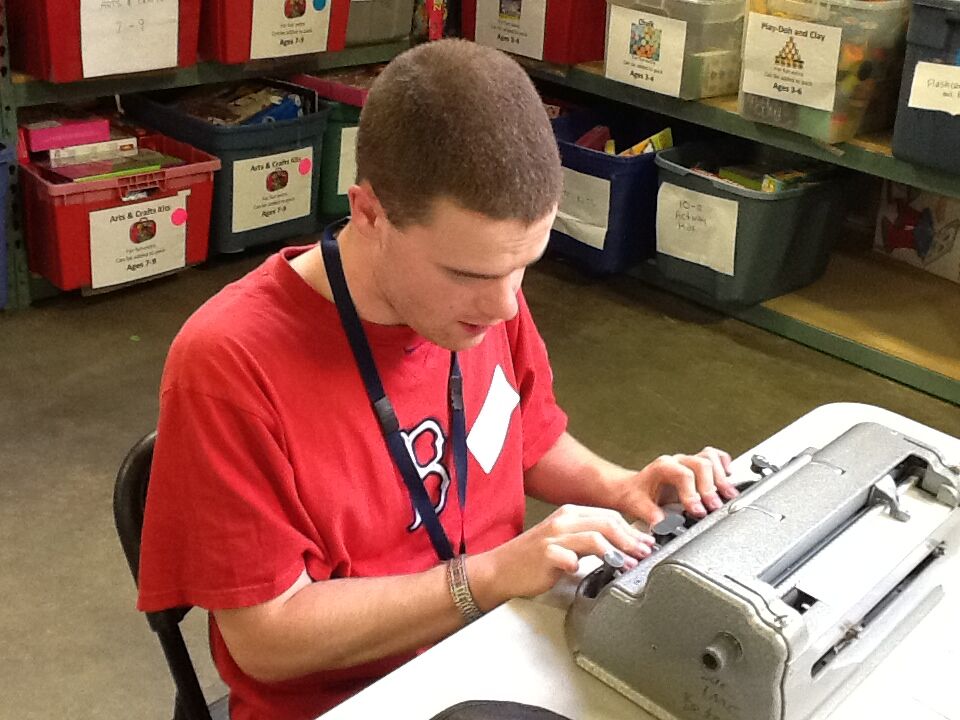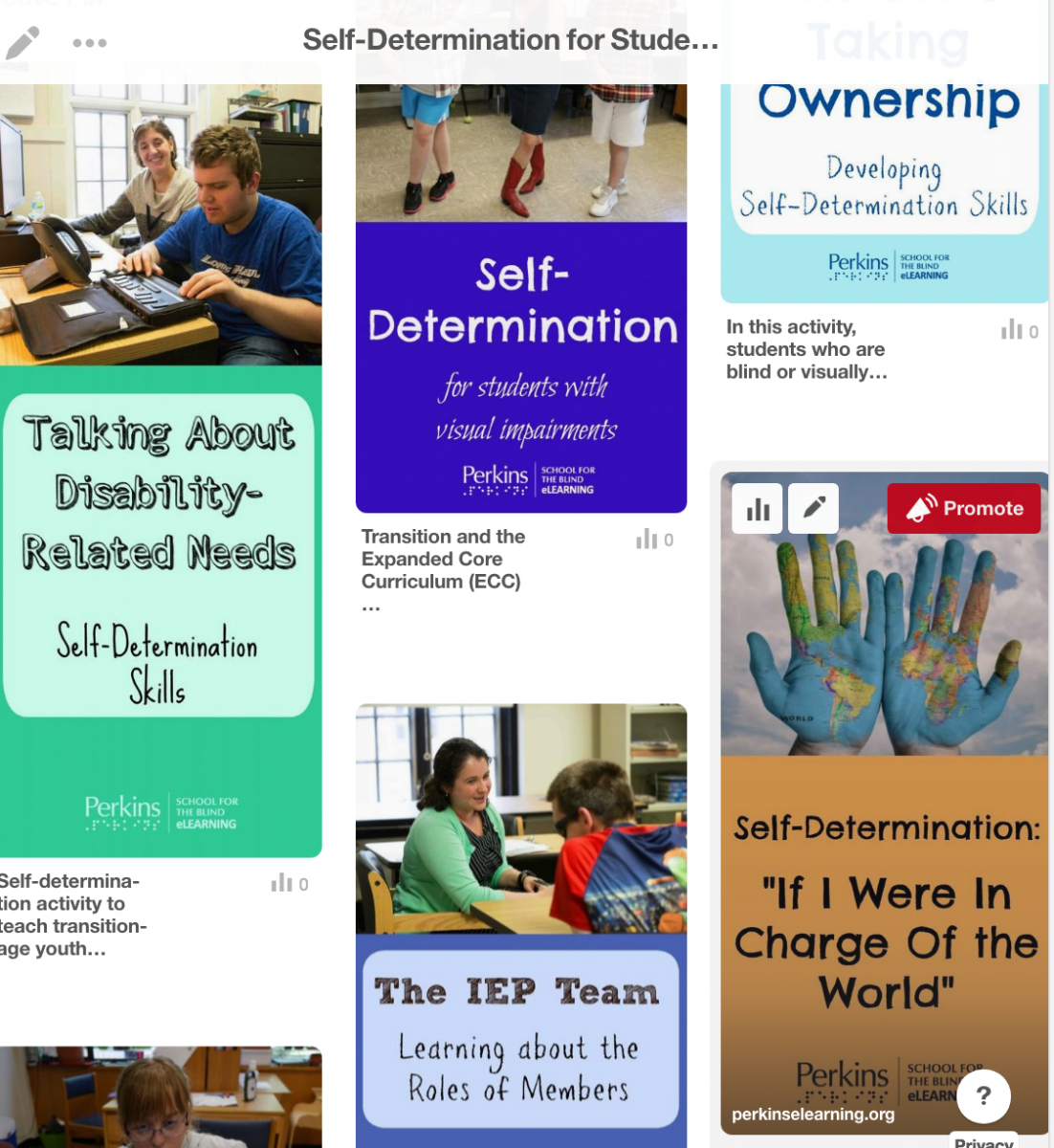
Self-Advocacy Goals: 15 Ideas from the Field
Self-advocacy goals for students who are blind, visually impaired, deafblind or multiply impaired
1. Try the goal bank from Texas School for the Blind.
They have a lot of goals that can be modified to meet your needs. These resources have been compiled from various schools and districts around the country and may not be formatted to conform to Texas State guidelines for IEP goals.
2. Determine need for magnification and teach student to enlarge on a copier.
I have had a student with a goal to learn how to enlarge on a copier in the past. She was a senior and she needed to know how to do this herself in preparation for college. I am always a fan of students using magnification if they can, as it allows them to be more independent and efficient going forward. This may have already been done for him, but I wonder if you could do an informal reading inventory (part of LMA) to determine reading rate and comprehension using large print vs. using regular print with magnification to see which he is more successful with and then share that data with parents? Perhaps if he is just as (or even more) successful using a magnifier, they could see evidence of that in the form of data, they might be more open to having him use a magnifier. Or, if he really is more successful with large print, that data could be shared with teachers who might then be more motivated to ensure he has large print if they realized it was actually bringing down reading speed/comprehension to have to use the magnifier.
3. Invite your student to run an inservice or develop a powerpoint to train his teachers about needed accommodations.
Self-Advocacy is a great goal and will be very important for your student moving forward to high school, college, and beyond. I remember once at a CTBVI a panel of visually impaired college students who shared self-advocacy is the most important skill to learn. It sounds like your student does his job of asking for enlargements when needed. The teachers are the challenge here. I am sure they are very busy and don’t mean to not accommodate your student. From your student’s standpoint it probably is a lot easier to use large print over a CCTV or magnifier. What about low vision simulators and having the teachers be shown the difference between large print and using a magnifier or CCTV? Maybe your student could run an inservice. Or develop a PowerPoint for teachers about his vision condition and needed accommodations and email it to them. If the teachers are still not cooperating, I would speak to school admin because it is your student’s right to have the accommodations noted in his IEP.
4. Consider Using Assistive Technology
Possibly using an iPad Pro 12.9″ with an app like SnapType Pro where your student can take a picture of the worksheet, type on it and email it to the teacher? In truth, we use this set up with several elementary students – it might be harder with the volume of material in junior high. Also, the Matt Connect: Smart Tablet-Based Magnifer just came out. We are excited about it for our high school students. We just ordered and are waiting for it to come. I think looking forward to high school, your student will probably need to use his assistive technology as gen ed has a lot of unexpected twists and turns, as you well know. In high school do they use Google Docs or Google Classroom? Maybe a laptop or notebook would be for him. It would good to have that look into the future to encourage your student to be prepared and begin getting ready.
5. Writing Transition Goals and Objectives [PDF] – Connecticut
Writing Transition Goals and Objectives … Goal: Student will demonstrate self-advocacy skills in order to communicate learning style, academic and behavioral needs.
6. IEPs and Self-Advocacy | Can I Ask to Have Self-Advocacy Goals Included in My Child’s IEP?
7. Self-Advocacy | Families and Adults/Tool Kits/Transition Tool Kit
8. 35 Measurable Self Advocacy and Self Determination Goals
9. Transition and Self-Advocacy | LD Topics | LD OnLine
10. Sample IEP Goals and Learning Objectives for GAP – Phonak
11. Self-Advocacy: A Valuable Skill for Your Teenager with LD
12. Promoting Student Self-Determination Skills in IEP Planning
13. Self-Advocacy and Personal Futures Planning
14. Self-Determination Units with Lesson Plans
http://www.tsbvi.edu/images/outreach/Documents/Self-DetermineUnitsTopics…
15. 26 Best Self-Advocacy and Goal Setting Images on Pinterest
Editor’s Note: Check out our Pinterest board on Self-Determination too! https://www.pinterest.com/pathstoliteracy/self-determination-for-student…

